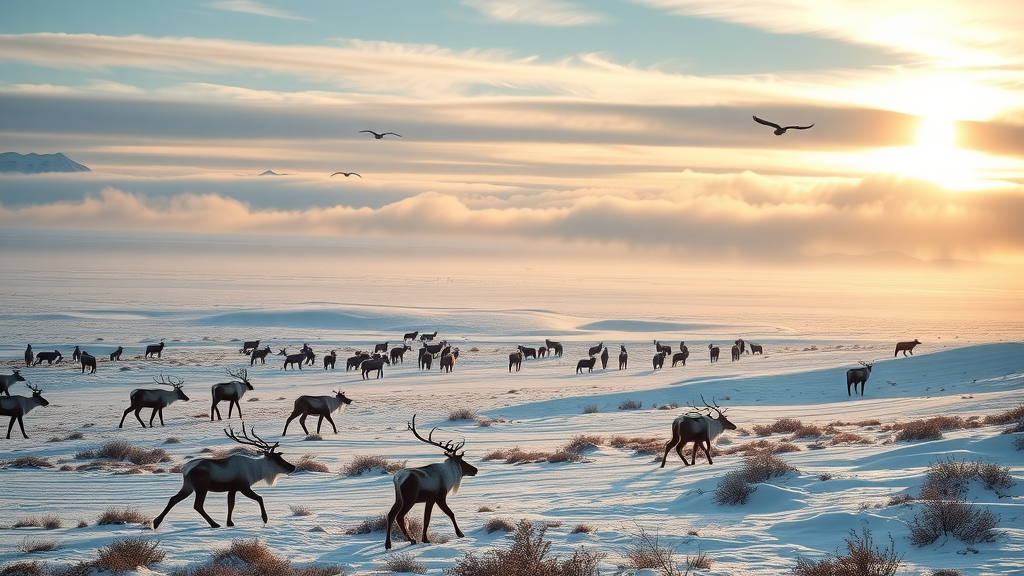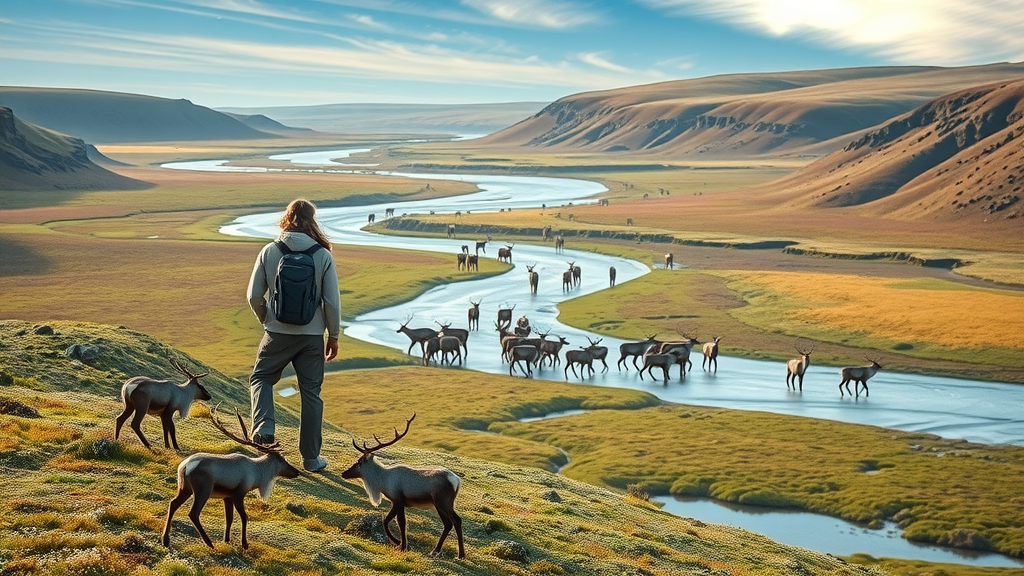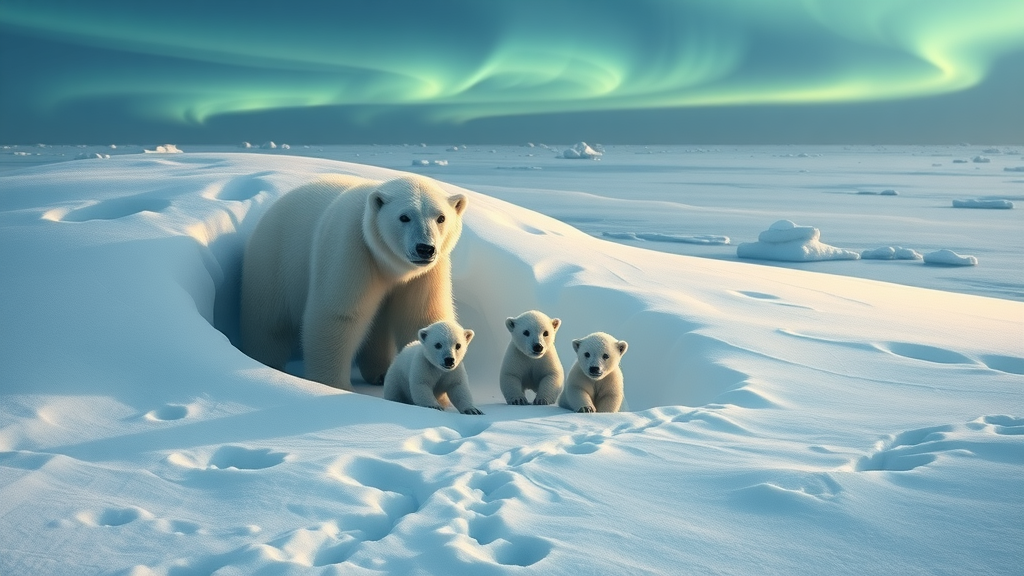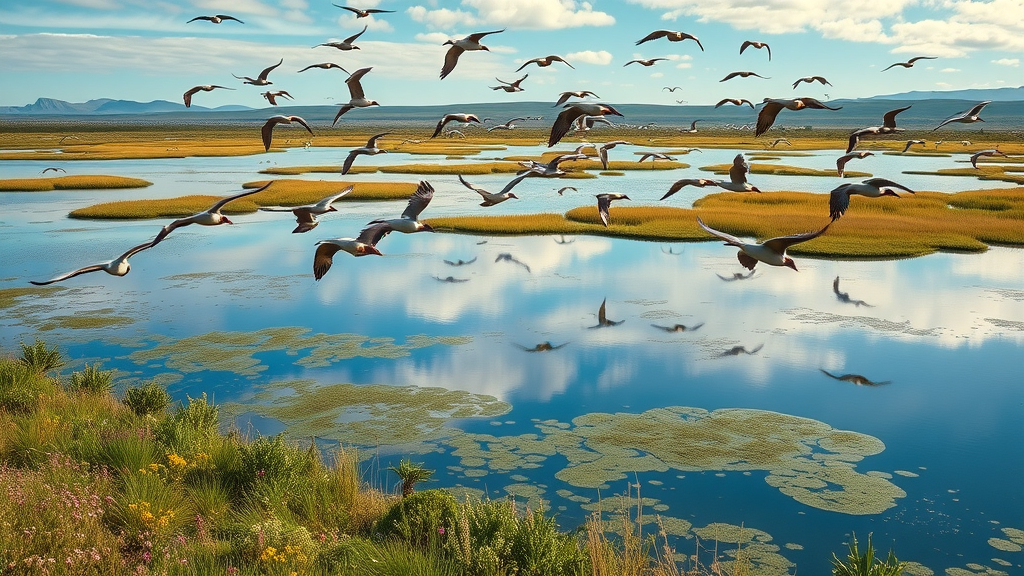The Last Great Wilderness: Why the Arctic National Wildlife Refuge Matters More Than Ever
When thinking of unspoiled and untouched places on Earth, the Arctic National Wildlife Refuge often stands at the pinnacle. Imagine a landscape where flat tundra gives way to rolling foothills, where herds of caribou migrate under the shadow of distant mountains, and where species thrive in a delicate balance that has remained undisturbed for millennia. As the climate crisis intensifies, and human impact reaches even the planet’s most remote corners, the Arctic National Wildlife Refuge emerges as a symbol of what is at stake: not only pristine wilderness, but also biodiversity, global climate stability, and the cultural legacy of indigenous communities.
The Arctic National Wildlife Refuge covers an astonishing expanse of land in Alaska’s northeast, stretching from the boreal forests right up to the windswept Arctic Ocean. This area, larger than several U.S. states combined, is a rare reservoir of life—home not just to migratory birds and resilient polar bears but to plants and animals found nowhere else. The urgency in preserving this iconic refuge is not just about protecting pretty landscapes. Rather, it is about safeguarding the interconnected web of life that influences ecosystems both near and far, ensuring that atmospheric cycles, animal migrations, and even the traditions of native peoples can endure. As debates rage over development versus conservation, understanding the true value of the Arctic National Wildlife Refuge is essential—both for today and for generations yet to come.

Untold Stories: How the Arctic National Wildlife Refuge Anchors Biodiversity and Climate
The Arctic National Wildlife Refuge is far more than a patch of cold, remote wilderness in Alaska—it is a living network supporting an intricate ecosystem. Within its boundaries, migratory caribou cross vast distances, polar bears den along its coastlines, and over 200 species of birds journey here from around the globe. The refuge’s expansive wetlands, tussocks, and river valleys are crucial stopovers for these creatures, providing shelter and nourishment they cannot find elsewhere. Without the unique mosaic of habitats found within the Arctic National Wildlife Refuge, entire species’ life cycles—including their breeding, feeding, and migration patterns—could collapse.
Not only does the refuge provide for a spectacular array of wildlife, but it also acts as a major regulator for the planet’s climate system. Its vast stretches of permafrost store enormous quantities of carbon—if disturbed, this ancient greenhouse gas could rapidly accelerate global warming. Equally, its unbroken landscapes ensure water cycles remain intact and support the last wild herds of American caribou, which native communities depend upon for their cultural and physical survival. The importance of the Arctic National Wildlife Refuge extends beyond its boundaries; its health directly influences the well-being of both neighboring ecosystems and distant communities around the world. Ignoring its significance runs the risk of unraveling not only Alaska’s natural heritage, but vital planetary functions on which we all depend.

Why Protection of the Arctic National Wildlife Refuge Ensures a Healthier Planet for All
As an expert voice rooted in years of research and stewardship, the Arctic National Wildlife Refuge exemplifies the highest standards of habitat preservation, environmental foresight, and respect for indigenous rights. What sets the refuge apart is not just its landscape, but the commitment to maintaining ecological integrity. By keeping vast tracts of tundra, mountain ranges, and rivers undisturbed, this refuge ensures that native flora and fauna—notably migratory caribou, wolves, waterfowl, and polar bears—can continue to thrive. The tangible benefits of this approach ripple beyond the animals themselves, reaching into the health of distant oceans and forests through connective food webs and atmospheric cycles.
Protecting the Arctic National Wildlife Refuge reinforces a global commitment to sustainable living. Safeguarding its permafrost and peatlands helps mitigate the effects of climate change, as these landscapes store carbon that would otherwise exacerbate planetary warming. For local and indigenous communities, its protection means ongoing access to traditional ways of life, including hunting and land stewardship practices handed down through generations. By prioritizing conservation, the Arctic National Wildlife Refuge not only protects rare and endangered species now, but also acts as a natural legacy for the world’s future inhabitants to inherit, explore, and cherish.

From Ice Age to Modern Day: The Refuge’s Living Timeline and Its Lessons For Us
The Arctic National Wildlife Refuge is a living record of natural history, where plants and animals have adapted to cycles of glaciation and warming for tens of thousands of years. The area reflects the resilience of life itself—demonstrating how ecosystems can survive massive changes if given space and time. As the last substantial stretch of the U.S. Arctic untouched by roads or industry, the refuge offers scientists, students, and policy makers a unique chance to study authentic ecological processes, freeing them from the confounding influences of urbanization and pollution.
Every breeding season, shorebirds from all seven continents descend on the refuge, highlighting its global significance for migratory species. The lessons to be learned from this pattern are clear: healthy and intact wilderness supports not just local life, but also distant nations and interconnected global systems. By understanding how the Arctic National Wildlife Refuge operates as an intact ecological laboratory, we reinforce the principle that preserving one region can have positive repercussions that far exceed its geographic boundaries.
Actionable Insights: What Each Person Can Do to Support the Arctic Refuge’s Future
With so much at stake, the decisions made about the Arctic National Wildlife Refuge are not abstract—they affect everyone. Those seeking to support its preservation can begin by learning about the species and ecological interactions that depend on the refuge, sharing this knowledge with peers and advocating for science-based policy choices. Engaging with current events—such as oil and gas exploration debates—and voicing support for conservation measures empowers a broader movement to protect wild places.

Responsible tourism, supporting indigenous rights, and participating in citizen science projects are practical ways to make a tangible difference. Whether by signing a petition or helping educate others, every action reinforces the refuge’s value as a global treasure. Small steps taken by individuals aggregate into large-scale change; in the face of challenges to the Arctic National Wildlife Refuge, collective action is more crucial than ever.
How the Arctic National Wildlife Refuge Embodies Responsible Stewardship and Global Impact
The Arctic National Wildlife Refuge operates under a guiding philosophy rooted in long-term stewardship, scientific integrity, and unwavering respect for the land’s natural rhythms. This mindset prioritizes ecological health as the foundation for current and future well-being, encapsulating an approach that balances human use with unyielding conservation goals. By maintaining extensive areas free from industrial disturbance, the refuge exemplifies a belief that real progress is measured by the continued flourishing of wildlife, undisturbed landscapes, and thriving indigenous cultures.
This philosophy translates into careful management: continually monitoring populations, adapting to shifting climate patterns, and seeking innovative solutions that reduce long-term threats. As a recognized authority on wilderness conservation, the Arctic National Wildlife Refuge demonstrates how informed, responsible action in one critical area can generate hope for preservation efforts far beyond Alaska. It stands as a model for leveraging science, local wisdom, and policy to craft resilient futures for wild places everywhere.
What Real People Say: Reconnecting to Nature Through the Arctic Refuge
There is sometimes no substitute for the genuine perspective of someone who has encountered the Arctic National Wildlife Refuge firsthand. First-person accounts offer unique insight into the way this vast and unique environment impacts those who experience it.
While few words may currently be documented in public reviews, the overwhelming sentiment among visitors and supporters is the sense of awe and responsibility that comes from interacting with one of the planet’s last true wildernesses. As more people recognize the Arctic National Wildlife Refuge’s vital role, they are inspired to speak out and take action, creating a shared legacy of protection and wonder for future generations.
The Enduring Relevance of the Arctic National Wildlife Refuge
The Arctic National Wildlife Refuge is not just an Alaskan or American treasure—it serves as a benchmark for what the world stands to lose or gain in our approach to wilderness protection. By centering the Arctic National Wildlife Refuge as a keystone for both ecological balance and climate mitigation, the importance of its continued conservation is undeniable. Through thoughtful stewardship, research, and a shared vision for sustainable coexistence, the Arctic National Wildlife Refuge’s enduring value as a haven for biodiversity and cultural richness shines brighter than ever.
Contact the Experts at Arctic National Wildlife Refuge
If you’d like to learn more about how the Arctic National Wildlife Refuge could benefit your understanding of wilderness conservation, contact the team at Arctic National Wildlife Refuge.
📍 Address: Anchorage, AK 99519, USA
🌐 Website:
Arctic National Wildlife Refuge Location and Hours
🕒 Hours of Operation: Not specified

 Add Row
Add Row  Add
Add 





Write A Comment